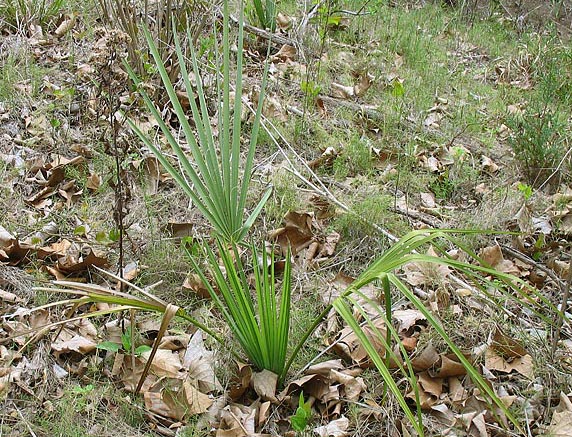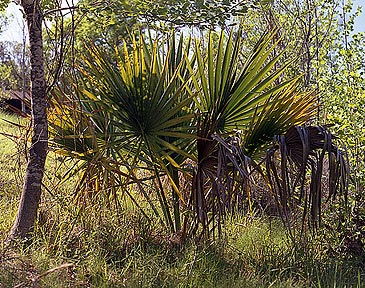 Sabal × brazoriensis 1988 |
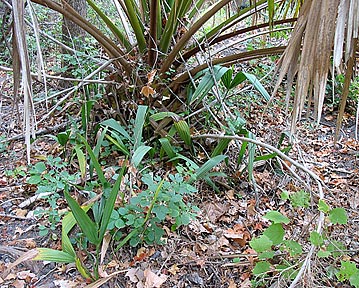 Same plant, with volunteer seedlings, 2009 |
|---|
 Sabal × brazoriensis 1988 |
 Same plant, with volunteer seedlings, 2009 |
|---|
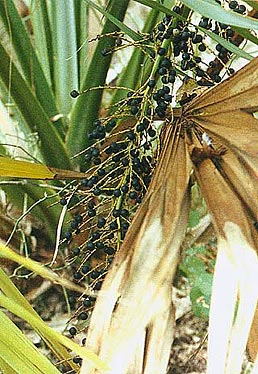 Infructescence, 1997. |
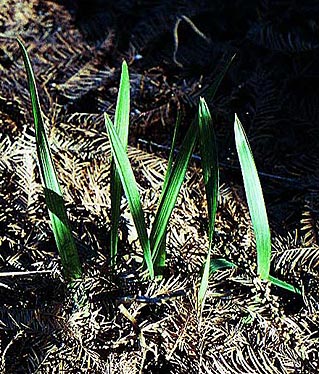 Seedling clump at base of large baldcypress, 2002 |
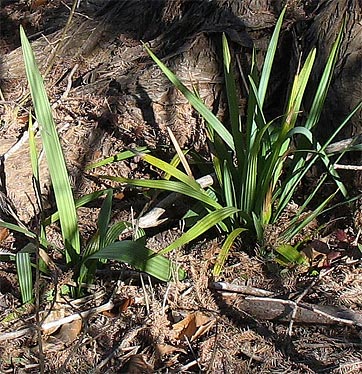 The same general group of seedlings in 2009 |
|---|
In a recent survey of the development of 5-year juvenile Sabal plants of 5 'types' I was struck by the difference in leaf segmentation among the types. S. mexicana and S. palmetto already had numerous multisegmented leaves, but the Brazoria Sabals had only eophyll-like leaves (although larger).
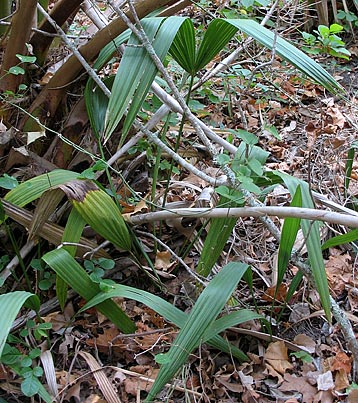 Largest volunteer at base of above palm, 2009. |
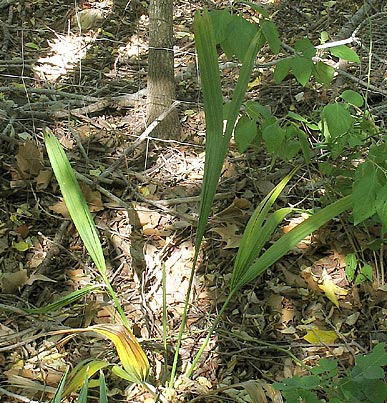 12-year juvenile, 2009 |
|---|
I recognized that this same pattern of development had been
going on for years with the volunteer juveniles (plus one plant
germinated from seed 12 years ago). Of these 165 plus plants,
many of which were over 10 years old, only 3 had multisegmented
leaves. The oldest of them mostly had simple or bifid leaves,
occasionally trifid. (Note the volunteers at the base of the
mother palm in the top picture.) The pictures accompanying the
above Google Map link presents this evidence.
